
medalnet
-
Posts
897 -
Joined
-
Last visited
-
Days Won
3
Content Type
Profiles
Forums
Blogs
Gallery
Events
Store
Posts posted by medalnet
-
-
Yes, sorry, batch means mini series of a specific number of pieces. I have seen roman numbering on Red Eagle Order stars as high as XXVIII = 28.
I am not quite sure about the swadow. What do you mean? The black liner is stenciled, the red filled in in my opinion. This is why the later pieces mostly have faded red and missing pieces of the red.
0 -
Since these were not "batch" made, I expect minor differences.
The fact is that they are batch made. some pieces have even sequential numbering in order to piece a series of a batch correct together. One can easily observe this with Red Eagle stars. 90% has roman numbering inside the medalion center. The golden commander crosses of the Saxon Order of Albert show this as well on the joined insde the crown.
Another add to what Brian said...the paintings are indeed stencil based.
0 -
Here the originanl Hanf & Zimmerman:

 0
0 -
...no nothing to add. well explained.
Let me maybe add as a general comment that there is a new series of fakes of the Red Eagle Order coming to the market. This one looks very similar to those I had in hand.
The painting resembles those pieces made by either "Humbert & Sohn" or "Hanf & Zimmerman" during the 1850th, just like this one. Certainly one of the best fakes of imperial German orders I have seen so far.
0 -
Could you suply extreme close ups of the eagle painting and the oak leaf?0
-
Having finally (FINALLY) brought this group home for detailed scanning, I may as well add it here. Andreas will recognise it.
Yes, I do.
 this is the reason why I needed a new one.
this is the reason why I needed a new one. 
Let me know when I can have it back
 0
0 -
An order without swords made before 1916 and still unawarded would be Gold, would it not? Since this is a silver gilt piece, this would appear to be just another way of attaching the swords. The rivets appear to be bronze, perhaps this was a later war way to speed up production when so many of these were being awarded. Was Godet an official supplier of the HHO to the Order Chancellery? If not this could even be post war. Still a Godet and a nice piece for the collection.
Dan Murphy
With over 7000 House Orders awarded, even Godet was official supplier.
My experience shows silver gilt rivets.
0 -
I guess one should pay attention to the other forums...I just posted a few pictures on the orders and decoratins part....
Here the link to it:
0 -
...and the recipient:

 0
0 -
...and the reverse:
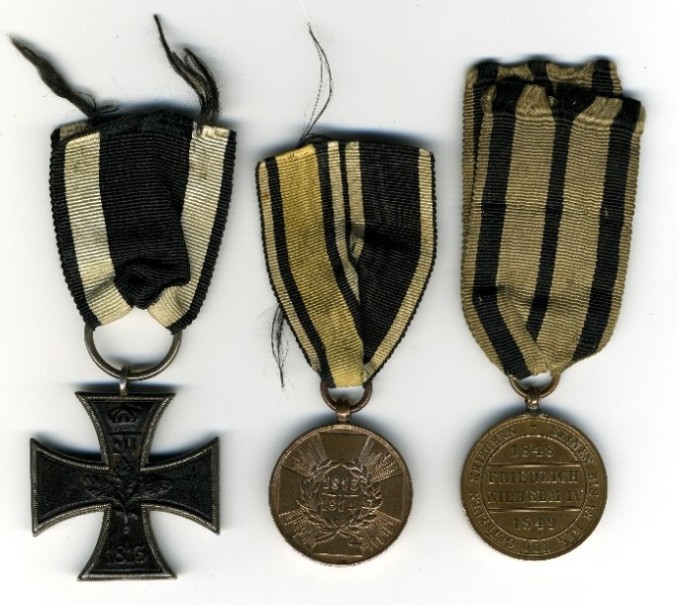
 0
0 -
Never having had in mind to lead my collecting interests away from enameled order decorations, I received this little group of medals with yesterday?s mail.
The possible recipient was a man named: ?Schmidt?, which is unfortunately all the grand daughter could tell me. She was kind enough to take a picture of her ancestor and email it to me.
You will see him wearing besides the Iron Cross the Russian St.George Cross, which unfortunately didn?t survive the last 192 years.
Yet the 1813/1814 combatant medal survived and seemed to have been worn on an interesting ribbon. Made in one weave, it represents the Iron Cross ribbon as well as the ribbon of the commemorative medal itself. His 1848/49 commemorative medal survived as well.
About the Iron Cross: the Iron core rattles and it looks like it was soldered on the top left frame tip, only. Besides, it is rather thick with about ~2.5 mm.
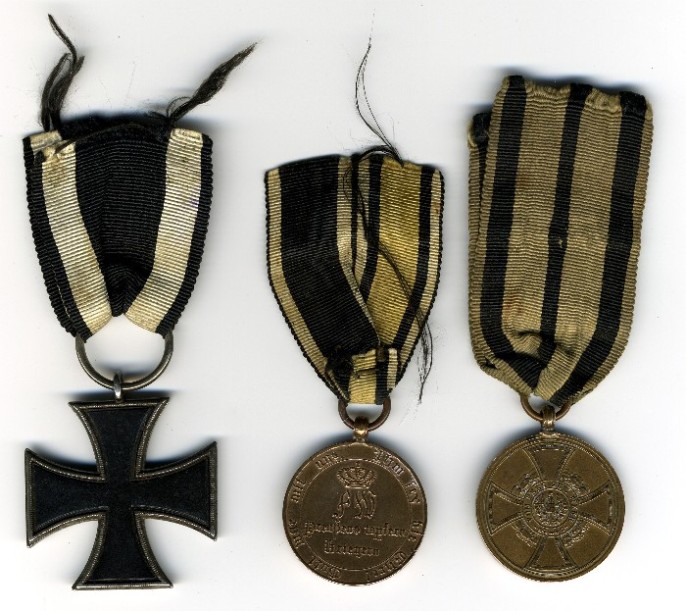
 0
0 -
Those pieces always remind me of how sturdy enamel really is. Imagine the hammer coming down to fix those rivets...0
-
wow - as always Andreas has the most impressive pieces!!!!




Is this wonderful barette from the 1830-50s ? beautiful artwork !!!
Heiko
Thanks guys. I am not sure what timeframe exactly, but definetly arround 1830th. It would be nice to find out about the recipient. yet this might be kind of tough due to the fact that this fellow must have been austrian besides the problem with the grades of those decorations.
0 -
-
below my contribution on minis.
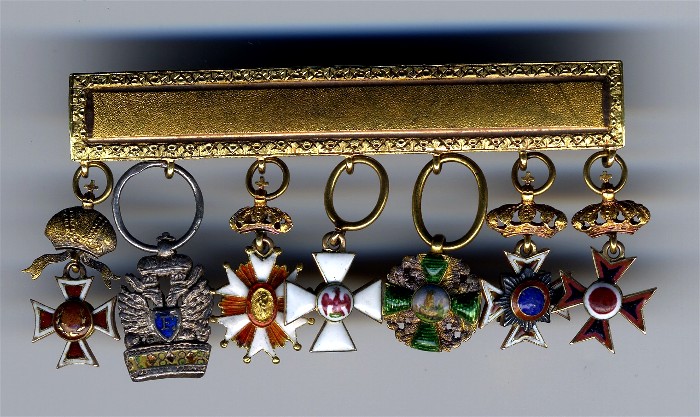
 0
0 -
Yes, it was tested. It was weighed. and it was gold. You're absolutely discounted the effect of the resin used to assmble crosses that as you know, leaks out from time to time. This piece was gold.
Stogieman,
The tooling was never made for bronze gilt pieces. They used the tooling formerly used for golden pieces to make the cheap end of the WWI timeframe bronze gilt order decorations.
Ergo: There are golden pieces from the same tooling.
0 -
I can't speak for Dan's, but mine was gold and there's no disputing that!
Did you test yours? There some oxidations that look rather not typical for a golden piece. gold does oxidizes, yet in different colors. I marked those places in your picture...

 0
0 -
-
So Andreas, are you saying that his and mine are both bronze gilt? Well, it was a nice dream while it lasted. Sorry Stogie.
 I don't doubt you Andreas, but I can't figure out why they would make hollow bronze. All of the work that must entail just to save some bronze? The Germans are an unusual people, in a good way though.
I don't doubt you Andreas, but I can't figure out why they would make hollow bronze. All of the work that must entail just to save some bronze? The Germans are an unusual people, in a good way though. Dan Murphy
It comes down to the tooling. Tooling for golden order decoration lasts a lot longer due to the soft material. Since they had those, they would use them to coin/stamp the bronze gilt pieces. There are even commander crosses of the Ernestine house order made from gilt bronze in a hollow fashion.
This explains the similar light weight.
By the way, here is the big brother of the golden knight badge:
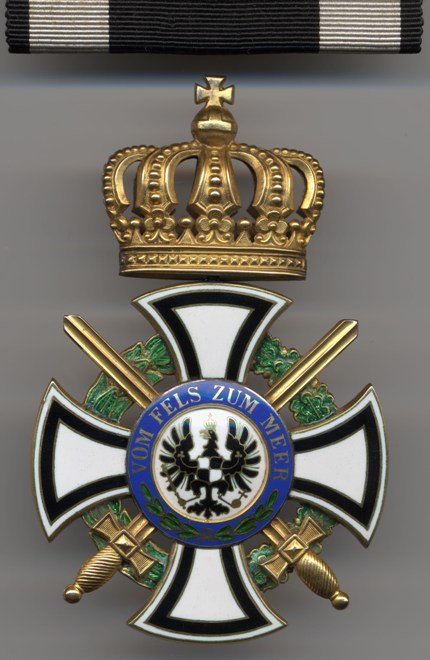
 0
0 -
-
...and here is a GOLD one, scratch mark "W":
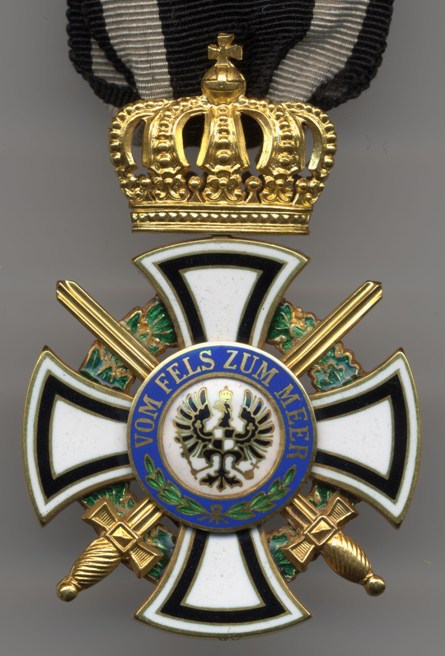
 0
0 -
By the way, the bronze gilt ones are hollow made as well as their golden brothers and sisters. Especially Ernestine House order or the silver gilt MVOs0
-
Stogieman,
I purchased this piece as bronze gilt. Upon seeing your gold one with the dark enamel, I had one with similar enamel. When I conpared the two, it is also lighter than my Friedlander 938 piece. I do not have a scale to weigh it, other than that is there any way to verify whether it is Gold or not. Here are some pics Obverse,

Thank you, thank you, thank you. I knew it is bronze gilt....
Let me tell, you that it is not that easy to determine weather something is bronze gilt or gold just by looking at it. Unfortunately some states went from silver gilt to bronze gilt during the end of WWI. For example the Ernestine house order knight badges with swords are almost always bronze gilt. Yes, I know they always feature red and yellow gold, but are still bronze gilt.
So are those pictured here. Very untypical swords and looking at the crown I can see some oxidation that is not typical for gold.
there you go....
It is still a very nice piece stogieman.
0 -
That is true memory. I had already forgotten.
Anyway, very nice piece. It is quite interesting how many different varaitions exist on the House Order of Hohenzollern.
0



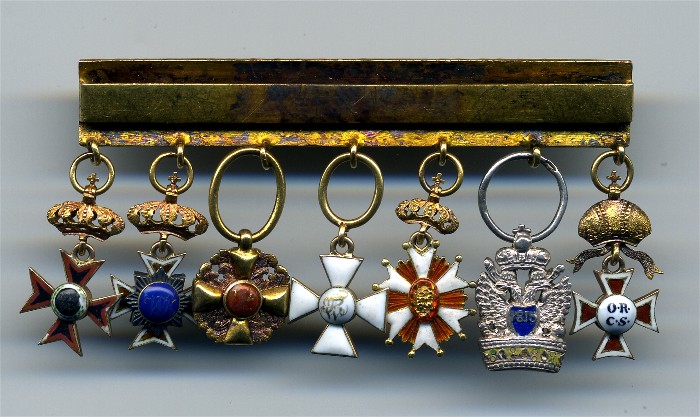

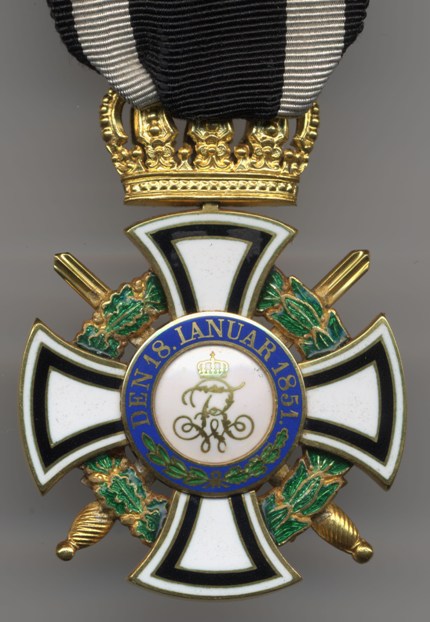
RAO 2. Klasse mit Eichenlaub
in Germany: Imperial: The Orders, Decorations and Medals of The Imperial German States
Posted · Edited by medalnet
Believe me it is! I had them in my hands.